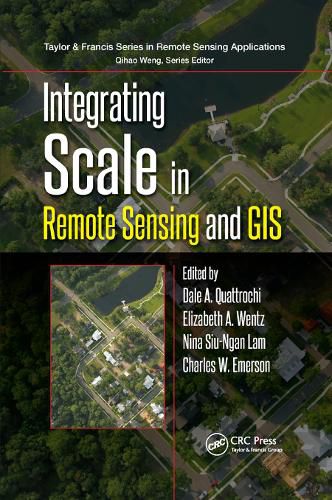Readings Newsletter
Become a Readings Member to make your shopping experience even easier.
Sign in or sign up for free!
You’re not far away from qualifying for FREE standard shipping within Australia
You’ve qualified for FREE standard shipping within Australia
The cart is loading…






Integrating Scale in Remote Sensing and GIS serves as the most comprehensive documentation of the scientific and methodological advances that have taken place in integrating scale and remote sensing data. This work addresses the invariants of scale, the ability to change scale, measures of the impact of scale, scale as a parameter in process models, and the implementation of multiscale approaches as methods and techniques for integrating multiple kinds of remote sensing data collected at varying spatial, temporal, and radiometric scales. Researchers, instructors, and students alike will benefit from a guide that has been pragmatically divided into four thematic groups: scale issues and multiple scaling; physical scale as applied to natural resources; urban scale; and human health/social scale. Teeming with insights that elucidate the significance of scale as a foundation for geographic analysis, this book is a vital resource to those seriously involved in the field of GIScience.
$9.00 standard shipping within Australia
FREE standard shipping within Australia for orders over $100.00
Express & International shipping calculated at checkout
Integrating Scale in Remote Sensing and GIS serves as the most comprehensive documentation of the scientific and methodological advances that have taken place in integrating scale and remote sensing data. This work addresses the invariants of scale, the ability to change scale, measures of the impact of scale, scale as a parameter in process models, and the implementation of multiscale approaches as methods and techniques for integrating multiple kinds of remote sensing data collected at varying spatial, temporal, and radiometric scales. Researchers, instructors, and students alike will benefit from a guide that has been pragmatically divided into four thematic groups: scale issues and multiple scaling; physical scale as applied to natural resources; urban scale; and human health/social scale. Teeming with insights that elucidate the significance of scale as a foundation for geographic analysis, this book is a vital resource to those seriously involved in the field of GIScience.